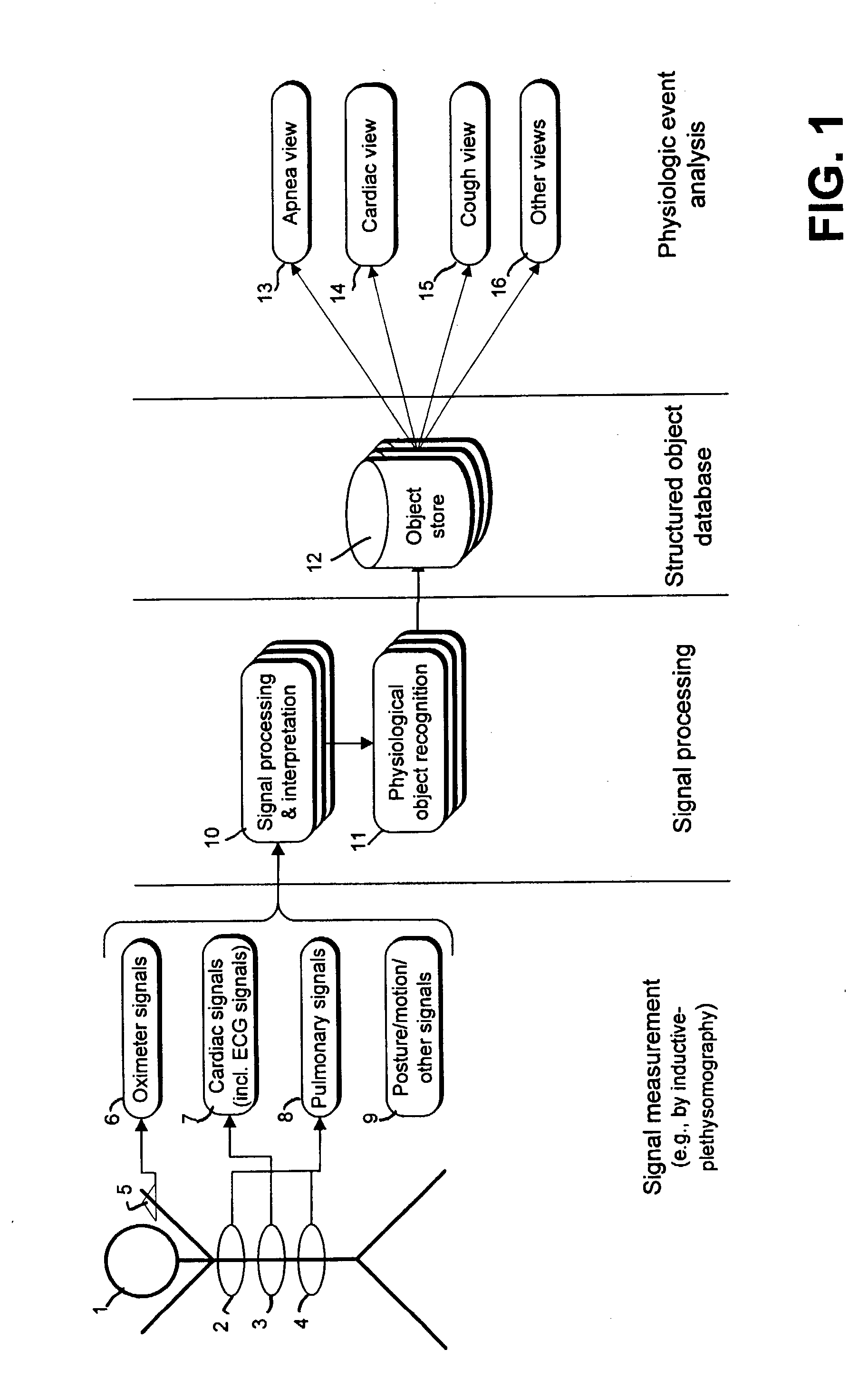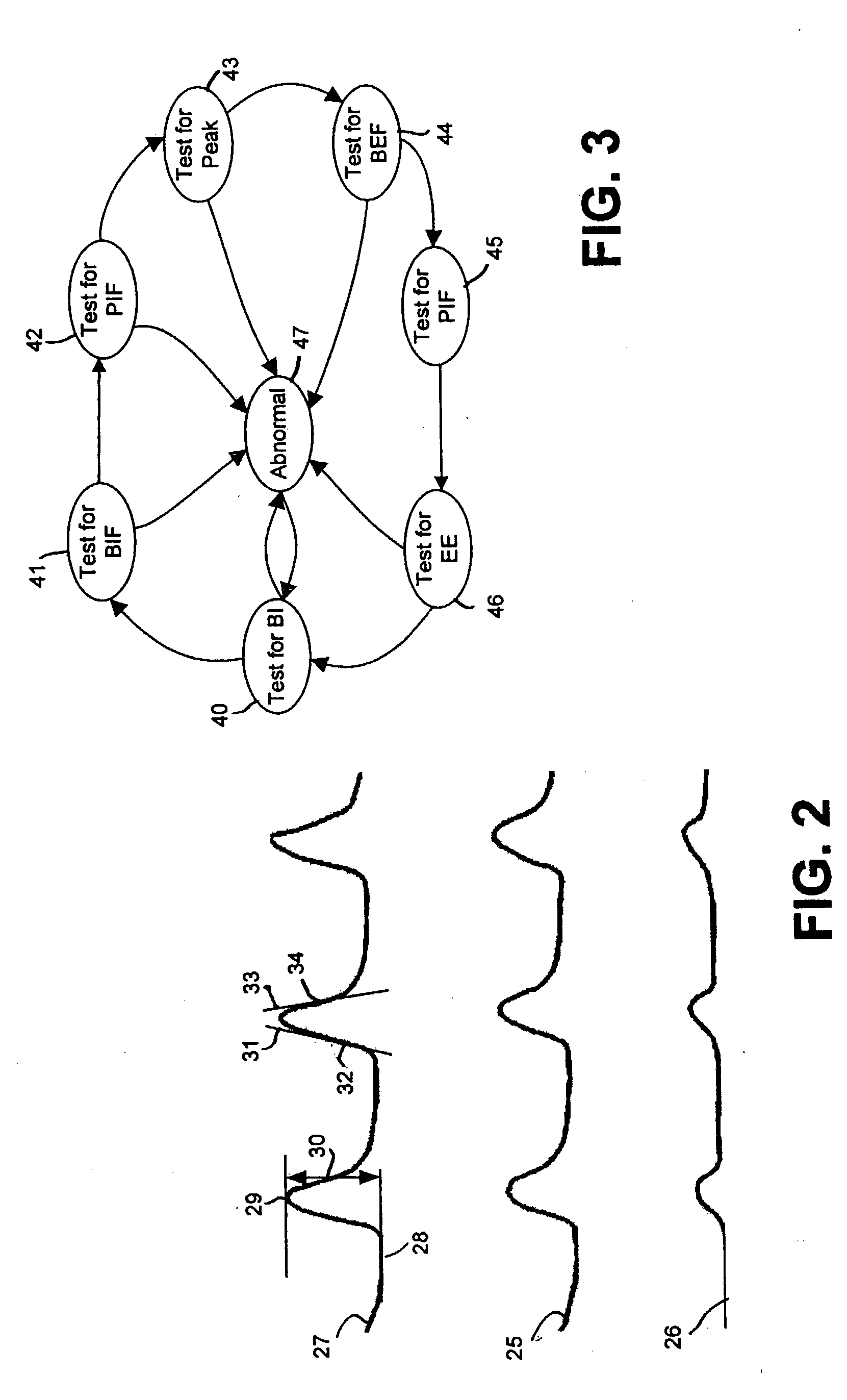Methods and systems for analysis of physiological signals
a physiological signal and system technology, applied in the field of physiological signal analysis methods and systems, can solve the problems of lack of current art, lack of flexibility of current analysis techniques, and inability to meet the needs of current art, so as to improve reliability and maintainability, reduce complexity
- Summary
- Abstract
- Description
- Claims
- Application Information
AI Technical Summary
Benefits of technology
Problems solved by technology
Method used
Image
Examples
Embodiment Construction
[0033] The systems and methods of this invention are capable of processing and interpreting data representing the time course of a variety of repetitive or quasi-periodic physiologic processes in a subject. For example, this invention may process arterial or venous blood pressures measured non-invasively or invasively, blood flows measured by intravascular catheters, by Doppler ultrasound techniques, etc., electrocardiographic ("ECG") measurements of heart activity, pulmonary air flow measurements by spirometric or resistive techniques, exhaled-air composition data, intra-pleural pressure data, myographic data from, for example, intercostal muscles, and so forth. However, without limitation, the preferred embodiments described herein process cardiopulmonary, and preferably primarily pulmonary, related data produced by known non-invasive measurement techniques. Inductive plethysmography is a particularly preferred measurement technique because it may be used both for ambulatory and h...
PUM
 Login to View More
Login to View More Abstract
Description
Claims
Application Information
 Login to View More
Login to View More - R&D
- Intellectual Property
- Life Sciences
- Materials
- Tech Scout
- Unparalleled Data Quality
- Higher Quality Content
- 60% Fewer Hallucinations
Browse by: Latest US Patents, China's latest patents, Technical Efficacy Thesaurus, Application Domain, Technology Topic, Popular Technical Reports.
© 2025 PatSnap. All rights reserved.Legal|Privacy policy|Modern Slavery Act Transparency Statement|Sitemap|About US| Contact US: help@patsnap.com



